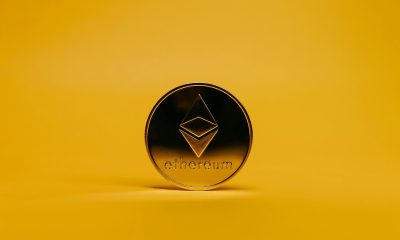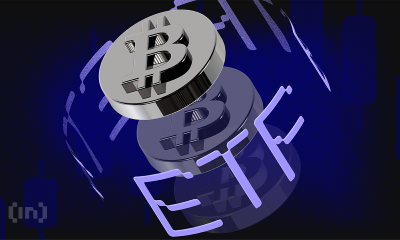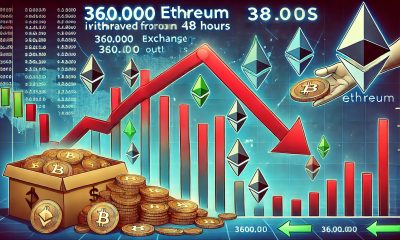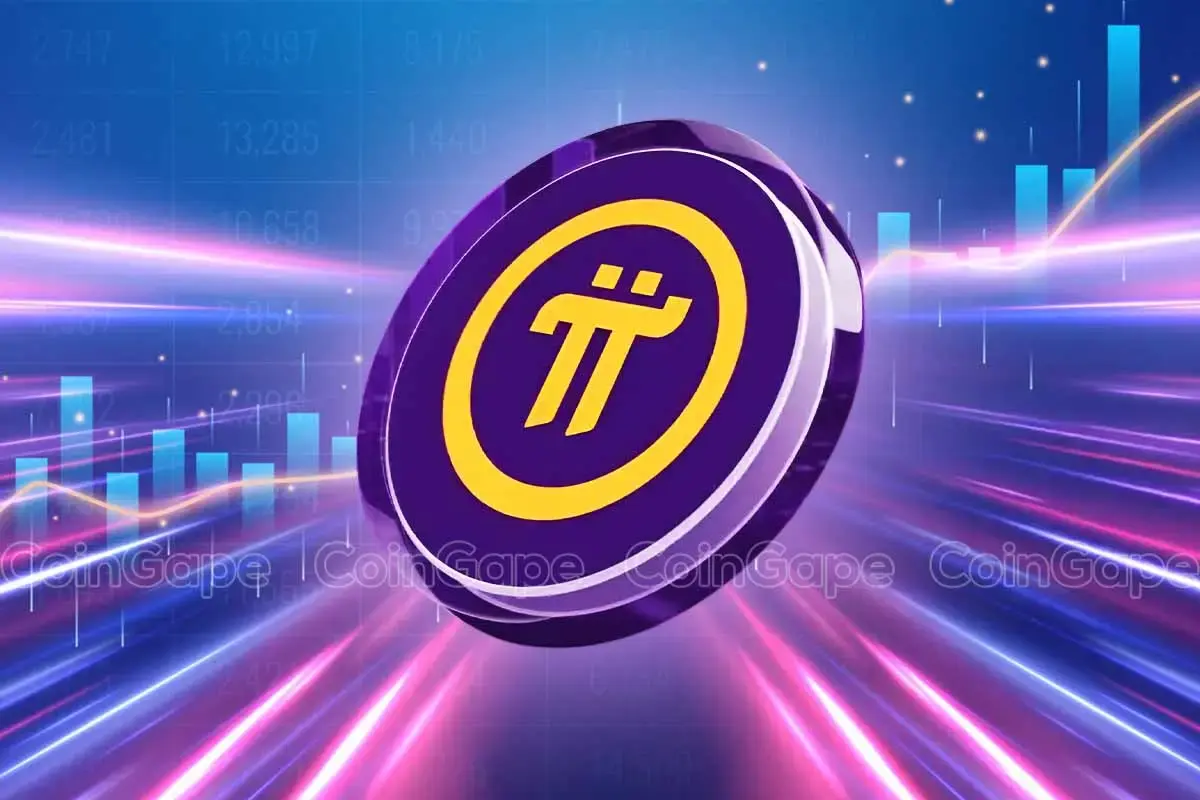Market
Why Telegram’s Tap-to-Earn Segment Is Winning Investors


The rapid rise of tap-to-earn games on Telegram, powered by The Open Network (TON) blockchain, has attracted significant attention — and funding — from venture capitalists. Investors are making substantial bets on Telegram’s tap-to-earn games like Notcoin, Hamster Kombat, and Catizen, seeing them as the future of Web3 gaming.
But what exactly is driving these investment decisions, and how do investors envision the future of tap-to-earn? BeInCrypto recently interviewed Animoca Brands, one of the biggest TON validators, and Hashkey Capital, which has made significant investments and formed partnerships with Catizen.
Investors Eye Social Experiences as the Future of Tap-to-Earn Games
Undeniably, one of the key reasons venture capitalists are drawn to Telegram’s tap-to-earn ecosystem is its vast and engaged user base. With 950 million active users as of July 2024, the platform offers an unparalleled audience for developers looking to launch and scale games. This kind of organic reach dramatically reduces user acquisition costs, which is a major selling point for investors.
Furthermore, its crypto-native infrastructure sets Telegram apart from other platforms in the Web3 gaming space. The integration of TON blockchain allows for seamless transactions, reducing friction between the gaming experience and the user’s wallet. This ease of use is a significant draw for both developers and investors, as it allows instant monetization without the hurdles typically associated with blockchain adoption.
“Telegram is one of the few platforms where Web3 mechanics are baked into the experience. The ability to move from gameplay to crypto transactions without leaving the app is a huge competitive edge,” Junbo Yang, Investment Manager at Hashkey Capital, explains.
For investors, this integrated experience makes Telegram a prime candidate for further investment. The platform’s low transaction fees, scalability, and growing list of mini-apps ensure that developers can continue to innovate and retain users without the technical barriers that often plague Web3 adoption.
As TON ecosystem and tap-to-earn games grow, investors remain optimistic about the future of this segment. For instance, Hamster Kombat alone has attracted over 300 million users across 190 countries, with its upcoming HMSTR airdrop poised to be one of the largest in the crypto space.
Read more: What Is Hamster Kombat?
Meanwhile, Catizen has successfully built a loyal user base while optimizing its monetization strategy. Likewise, Notcoin attracted over 40 million global users and executed one of the year’s largest airdrops, solidifying its position as a key player in TON ecosystem.
Both Hashkey Capital and Animoca Brands see the success of these games as just the beginning. They believe as developers improve game mechanics, they will also discover new ways to retain users, moving beyond simple rewards to social and immersive experiences.
Why Telegram Could Drive the Next Web3 Boom?
Furthermore, the investors view these games as a proof of concept, demonstrating the scalability of the tap-to-earn model and its ability to retain users beyond initial incentives. This success reveals significant potential for growth and expansion within the tap-to-earn sphere.
In a recent exclusive interview with BeInCrypto, Yat Siu, the co-founder and executive chairman of Animoca Brands, strongly advocated integrating blockchain gaming into Telegram. He sees that the built-in audience allows games to scale quickly without costly marketing campaigns—a crucial factor for venture capitalists eyeing high returns.
“The next 100 to 200 million users in Web3 will come from Telegram and its gaming ecosystem,” Siu remarks.
Investors are primarily focused on three factors: user acquisition, scalability, and retention. However, they are also particularly excited about the potential for long-term monetization. Catizen, for example, stands out for its ability to retain users and optimize their lifetime value (LTV), showcasing sustainable growth and a profitable tap-to-earn model.
Junbo Yang highlights how Catizen and similar games set the stage for future development by prioritizing monetization and long-term user engagement.
“The early success of Catizen in monetizing its user base offers a blueprint for how other developers can scale their games,” Yang notes.
These investors’ perspectives align with the game teams’ long-term visions. In an email to BeInCrypto, the Hamster Kombat team revealed their plan to evolve into a multi-game platform.
“After the first airdrop, we will launch the second season with a massive expansion, allowing players to choose from multiple games to play. This begins the transformation of Hamster Kombat from a game into a gaming platform, similar to how Valve moved on from launching cult-status games to Steam, the largest game marketplace for PCs,” they elaborated.
Turning Setbacks into Growth: Why Investors Remain Optimistic Despite TON’s Hiccups
While the tap-to-earn model has proven its ability to attract users, the key challenge is keeping them engaged beyond initial airdrops and rewards. Some critics have raised concerns about mercenary users—those who join games solely to earn tokens—but investors see this as a short-term challenge.
However, investors believe that as developers increasingly adopt the tap-to-earn model, they will also find ways to extend user lifecycles, enhancing its sustainability. Yat Siu believes that the tap-to-earn model, while currently reward-driven, is laying the foundation for a much larger gaming ecosystem.
“Tap-to-earn is just the beginning. Once users enter the ecosystem, the goal is to build community and social experiences that keep them engaged for reasons beyond just token rewards,” Siu argues.
In addition to the sustainability concerns, the Telegram ecosystem has faced recent challenges. For instance, earlier in August, BeInCrypto reported that TON blockchain experienced an outage, temporarily halting block production for several hours. This incident raised concerns about the network’s ability to handle future surges in activity, especially with the increasing number of users participating in tap-to-earn games.
Addressing the issue, Yat Siu acknowledged the outage but remained confident in TON’s resilience. Siu emphasized that TON is still in its early stages and believes that such challenges are part of the network’s growth process. He sees TON’s potential to become even larger than Telegram itself in the future, driving the platform’s growth.
“TON itself should remain as a censorship-resistant decentralized platform like other chains, but the projects and dApps themselves can implement measures to ensure stability,” he said.
Read more: Top 7 Telegram Tap-to-Earn Games to Play in 2024
Regardless of these challenges, venture capitalists remain confident in the potential of tap-to-earn. The coming years will reveal whether this model will secure its place as a lasting feature in Web3 gaming, but for now, investors are fully committed.
Disclaimer
Following the Trust Project guidelines, this feature article presents opinions and perspectives from industry experts or individuals. BeInCrypto is dedicated to transparent reporting, but the views expressed in this article do not necessarily reflect those of BeInCrypto or its staff. Readers should verify information independently and consult with a professional before making decisions based on this content. Please note that our Terms and Conditions, Privacy Policy, and Disclaimers have been updated.
Market
XRP Price Reversal Toward $3.5 In The Works With Short And Long-Term Targets Revealed
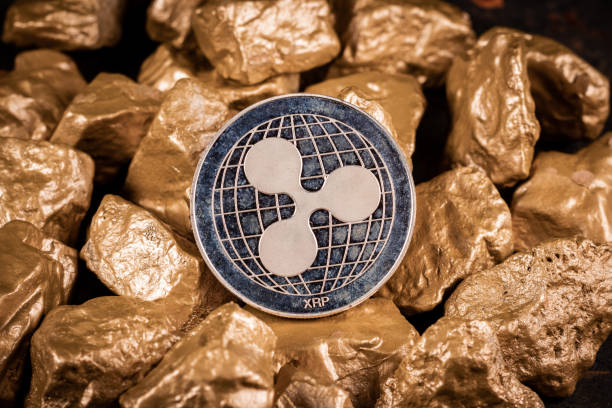
Reason to trust

Strict editorial policy that focuses on accuracy, relevance, and impartiality
Created by industry experts and meticulously reviewed
The highest standards in reporting and publishing
Strict editorial policy that focuses on accuracy, relevance, and impartiality
Morbi pretium leo et nisl aliquam mollis. Quisque arcu lorem, ultricies quis pellentesque nec, ullamcorper eu odio.
The XRP price is showing signs of a strong bullish reversal, with a crypto analyst predicting a potential rebound toward $3.5 and even higher. After experiencing significant volatility and undergoing a consolidation due to recent price declines, technical indicators now show support for XRP’s bullish outlook. As a result, the analyst has provided a short—and long-term price target for the cryptocurrency.
XRP Price Projected To Reverse To $3.5
According to ‘Setupsfx’, a crypto analyst on TradingView, XRP is now in a bullish reversal phase, meaning its price is expected to break out of its recent downturn and rise to new highs. Based on the expert’s chart analysis of XRP, the cryptocurrency is predicted to see an explosive increase to $3.5 following the end of its consolidation phase.
Related Reading
The chart indicates that the price of XRP is expected to rise to $3.5 in the coming months. However, from a fundamental analysis perspective, the analyst believes XRP is not limited to this bullish price target and could potentially surpass it to exceed current all-time highs of $3.84.
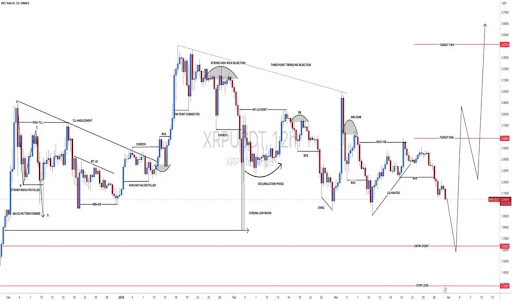
While the TradingView expert’s analysis of XRP maintains a neutral stance, implying uncertainty in the trend, he has also emphasized the cryptocurrency’s strong potential for growth. Hence, XRP could experience significant upward movement if market conditions align favorably and investor sentiment and confidence strengthen.
For his short-term price target, the crypto analyst forecasts that XRP could rally to a level above $3.5. He advises traders who intend to hold their positions for a short period to aim for this price level, as it could be a strategic exit point before a potential pullback.
Notably, the analyst’s long-term price target for XRP has been set at $4.0 or higher. Considering XRP’s price is currently trading at $2.09, a surge to $4 would represent an almost 100% increase in its price.
Technical Elements Supporting Bullish Reversal
In his chart analysis, Setupsfx highlights XRP’s price action in a 12-hour time frame, showcasing key movements, trends, and technical elements that support his bullish projection. These elements include liquidity and IMB zones, which are areas where price action is expected due to pending orders.
Related Reading
The analyst also highlights an accumulation phase, as XRP has been consolidating at lower levels, signaling the possibility of a potential breakout. The appearance of strong low wicks further indicates that buyers are regaining control of the market.
Finally, the TradingView analyst has indicated that the altcoin has already undergone a three-point trendline rejection, which means it has tested and rejected a resistance level multiple times. The expert’s price chart also provides an ideal entry point for both short and long-term traders, marked at $1.8. A stop loss has also been placed significantly lower around $1.2 to minimize potential losses.
Featured image from iStock, chart from Tradingview.com
Market
BNB Price Faces More Downside—Can Bulls Step In?
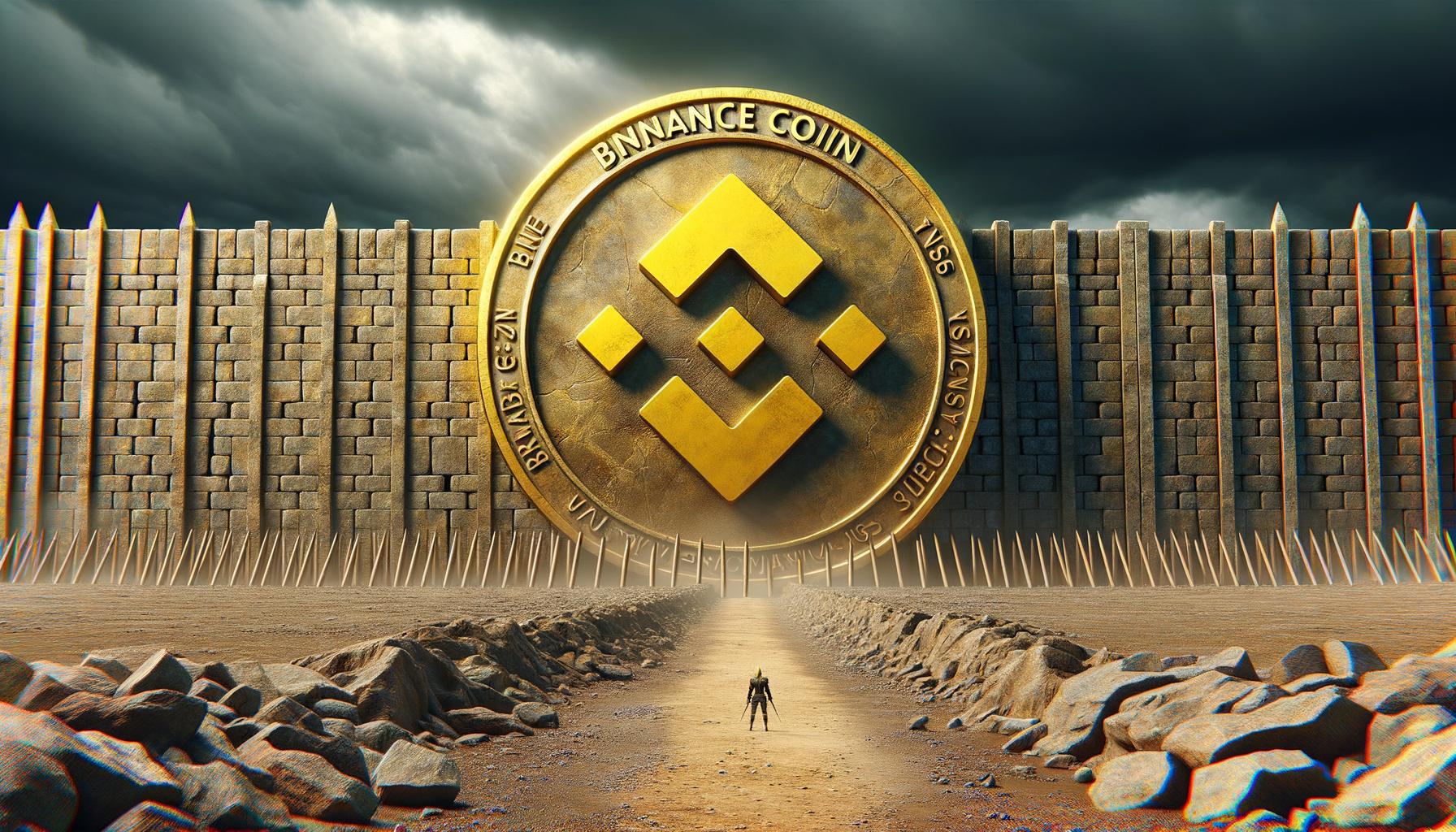
Aayush Jindal, a luminary in the world of financial markets, whose expertise spans over 15 illustrious years in the realms of Forex and cryptocurrency trading. Renowned for his unparalleled proficiency in providing technical analysis, Aayush is a trusted advisor and senior market expert to investors worldwide, guiding them through the intricate landscapes of modern finance with his keen insights and astute chart analysis.
From a young age, Aayush exhibited a natural aptitude for deciphering complex systems and unraveling patterns. Fueled by an insatiable curiosity for understanding market dynamics, he embarked on a journey that would lead him to become one of the foremost authorities in the fields of Forex and crypto trading. With a meticulous eye for detail and an unwavering commitment to excellence, Aayush honed his craft over the years, mastering the art of technical analysis and chart interpretation.
As a software engineer, Aayush harnesses the power of technology to optimize trading strategies and develop innovative solutions for navigating the volatile waters of financial markets. His background in software engineering has equipped him with a unique skill set, enabling him to leverage cutting-edge tools and algorithms to gain a competitive edge in an ever-evolving landscape.
In addition to his roles in finance and technology, Aayush serves as the director of a prestigious IT company, where he spearheads initiatives aimed at driving digital innovation and transformation. Under his visionary leadership, the company has flourished, cementing its position as a leader in the tech industry and paving the way for groundbreaking advancements in software development and IT solutions.
Despite his demanding professional commitments, Aayush is a firm believer in the importance of work-life balance. An avid traveler and adventurer, he finds solace in exploring new destinations, immersing himself in different cultures, and forging lasting memories along the way. Whether he’s trekking through the Himalayas, diving in the azure waters of the Maldives, or experiencing the vibrant energy of bustling metropolises, Aayush embraces every opportunity to broaden his horizons and create unforgettable experiences.
Aayush’s journey to success is marked by a relentless pursuit of excellence and a steadfast commitment to continuous learning and growth. His academic achievements are a testament to his dedication and passion for excellence, having completed his software engineering with honors and excelling in every department.
At his core, Aayush is driven by a profound passion for analyzing markets and uncovering profitable opportunities amidst volatility. Whether he’s poring over price charts, identifying key support and resistance levels, or providing insightful analysis to his clients and followers, Aayush’s unwavering dedication to his craft sets him apart as a true industry leader and a beacon of inspiration to aspiring traders around the globe.
In a world where uncertainty reigns supreme, Aayush Jindal stands as a guiding light, illuminating the path to financial success with his unparalleled expertise, unwavering integrity, and boundless enthusiasm for the markets.
Market
VanEck Sets Stage for BNB ETF with Official Trust Filing
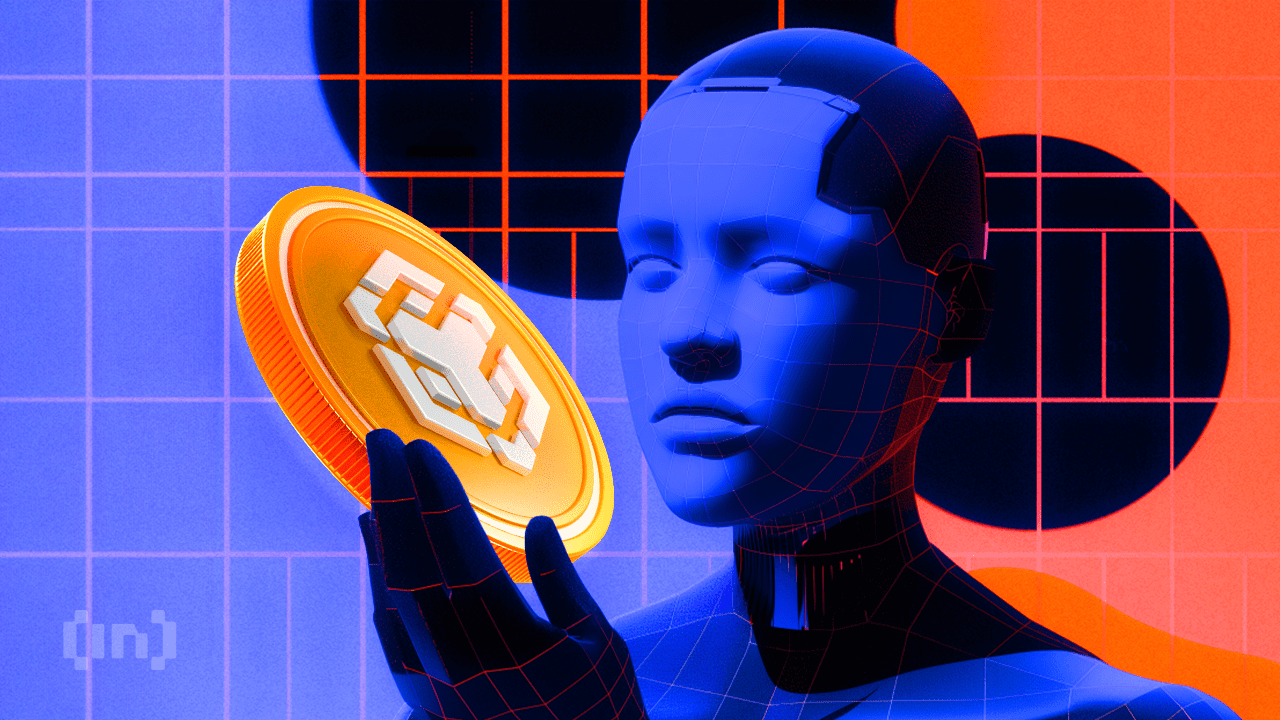
Global investment management firm VanEck has officially registered a statutory trust in Delaware for Binance’s BNB (BNB) exchange-traded fund (ETF).
This move marks the first attempt to launch a spot BNB ETF in the United States. It could potentially open new avenues for institutional and retail investors to gain exposure to the asset through a regulated investment vehicle.
VanEck Moves Forward with BNB ETF
The trust was registered on March 31 under the name “VanEck BNB ETF” with filing number 10148820. It was recorded on Delaware’s official state website.

The proposed BNB ETF would track the price of BNB. It is the native cryptocurrency of the BNB Chain ecosystem, developed by the cryptocurrency exchange Binance.
As per the latest data, BNB ranks as the fifth-largest cryptocurrency by market capitalization at $87.1 billion. Despite its significant market position, both BNB’s price and the broader cryptocurrency market have faced some challenges recently.
Over the past month, the altcoin’s value has declined 2.2%. At the time of writing, BNB was trading at $598. This represented a 1.7% dip in the last 24 hours, according to data from BeInCrypto.

While the trust filing hasn’t yet led to a price uptick, the community remains optimistic about the prospects of BNB, especially with this new development.
“Send BNB to the moon now,” an analyst posted on X (formerly Twitter).
The filing comes just weeks after VanEck made a similar move for Avalanche (AVAX). On March 10, VanEck registered a trust for an AVAX-focused ETF.
This was quickly followed by the filing of an S-1 registration statement with the US Securities and Exchange Commission (SEC). Given this precedent, a similar S-1 filing for a BNB ETF could follow soon.
“A big step toward bringing BNB to US institutional investors!” another analyst wrote.
Meanwhile, the industry has seen an influx of crypto fund applications at the SEC following the election of a pro-crypto administration. In fact, a recent survey revealed that 71% of ETF investors are bullish on crypto and plan to increase their allocations to cryptocurrency ETFs in the next 12 months.
“Three-quarters of allocators expect to increase their investment in cryptocurrency-focused ETFs over the next 12 months, with demand highest in Asia (80%), and the US (76%), in contrast to Europe (59%),” the survey revealed.
This growing interest in crypto ETFs could drive further demand for assets like BNB, making the VanEck BNB ETF a potentially significant product in the market.
Disclaimer
In adherence to the Trust Project guidelines, BeInCrypto is committed to unbiased, transparent reporting. This news article aims to provide accurate, timely information. However, readers are advised to verify facts independently and consult with a professional before making any decisions based on this content. Please note that our Terms and Conditions, Privacy Policy, and Disclaimers have been updated.
-

 Market24 hours ago
Market24 hours agoBitcoin Price Bounces Back—Can It Finally Break Resistance?
-

 Market19 hours ago
Market19 hours agoBNB Price Faces More Downside—Can Bulls Step In?
-

 Altcoin24 hours ago
Altcoin24 hours agoTether Expands Bitcoin Reserves with 8,888 BTC Buy—What’s the Plan?
-

 Bitcoin19 hours ago
Bitcoin19 hours agoTokenized Gold Market Cap Tops $1.2 Billion as Gold Prices Surge
-

 Market23 hours ago
Market23 hours agoEthereum Price Approaches Resistance—Will It Smash Through?
-
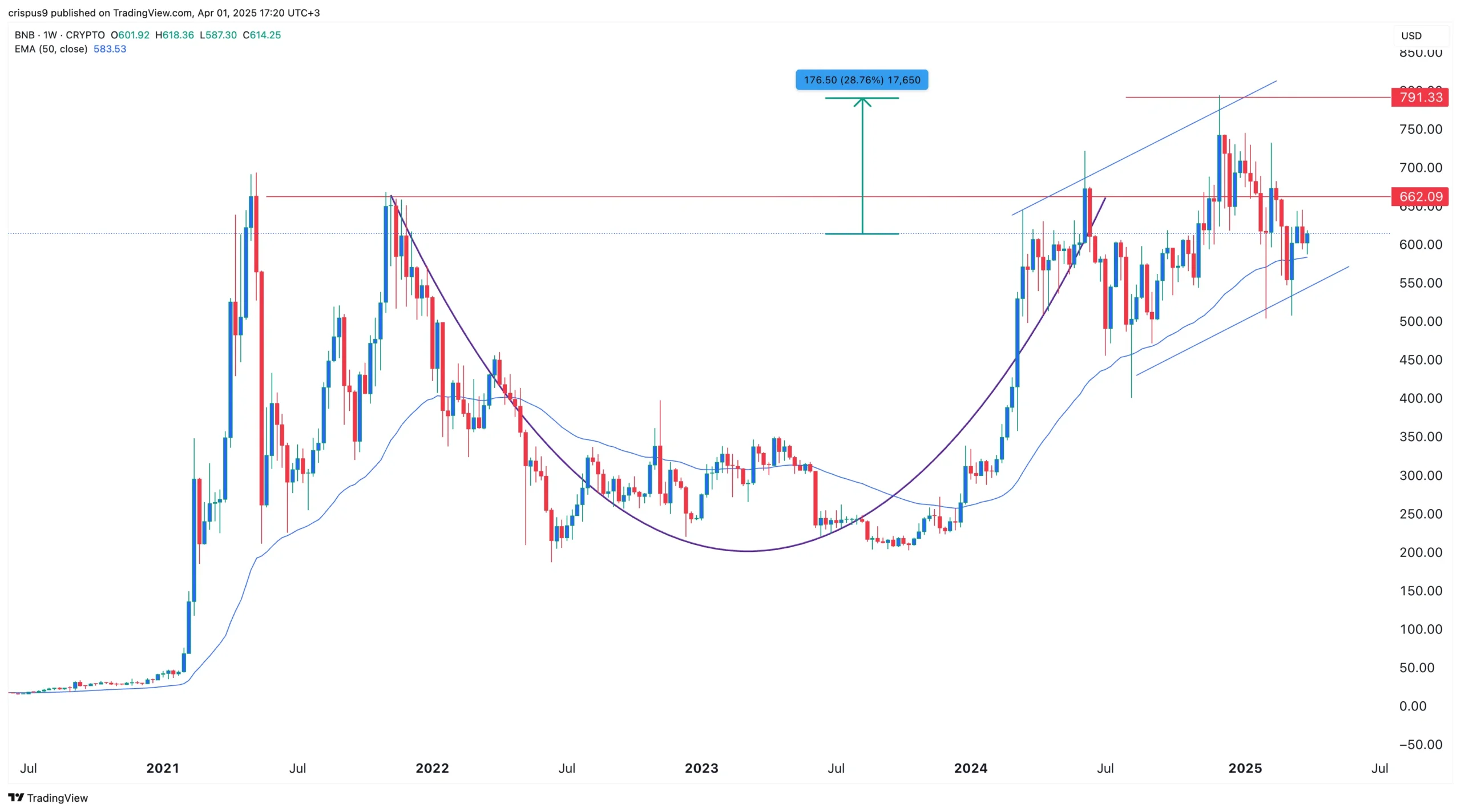
 Altcoin23 hours ago
Altcoin23 hours agoWill BNB Price Rally to ATH After VanEck BNB ETF Filing?
-

 Bitcoin15 hours ago
Bitcoin15 hours agoLummis Confirms Treasury Probes Direct Buys
-

 Regulation13 hours ago
Regulation13 hours agoKraken Obtains Restricted Dealer Registration in Canada


